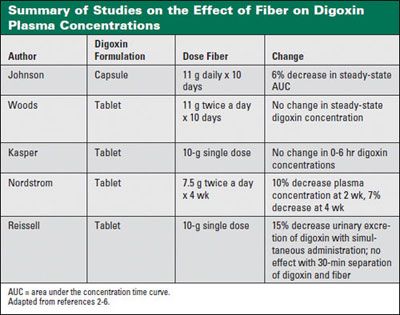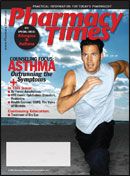Publication
Article
Pharmacy Times
Drug Interactions: Oatmeal: Good for Your Heart or Maybe Not?
Oatmeal is commonly touted as a healthy, cholesterol-lowering food—but does it present an interaction risk with digoxin?
Drs. Horn and Hansten are both professorsof pharmacy at the University ofWashington School of Pharmacy. Foran electronic version of this article,including references if any, visitwww.hanstenandhorn.com.
We recently received an e-mailfrom a pharmacist askingabout the interactionbetween oatmeal and digoxin. A hospitalnurse was concerned that oatmealgiven at breakfast would reducethe plasma levels of digoxin. The nurseclaimed that product information providedto patients when they filled prescriptionsat community pharmacies warnedof the interaction between digoxin andoatmeal or other high-fiber foods.
Many patients taking digoxin alsomay have elevated levels of cholesterol,so they may be trying to eat more fiberto help lower their cholesterol. Thus,advice to avoid foods high in fibermay be confusing to some patients.The pharmacist wanted to know if wethought this interaction was likely to beclinically important.
This type of question always requiresa review of the data regarding the interactionto establish the clinical relevanceof the potential interaction. Thelabel for the Lanoxin brand of digoxinstates that when taken with meals highin bran fiber, the amount of digoxinabsorbed from an oral dose may bereduced.1 No information is providedabout how much fiber is necessaryto cause a reduction in absorption,nor what foods might present a risk.Checking the Internet for informationon this potential interaction will yieldnumerous results warning of the interactionbetween digoxin and fiber.
A search of the medical literaturerevealedseveral studies of the effect offiber on digoxin absorption (Table). Ineach of the studies, digoxin was administeredwith and without meals containingsupplemental fiber. A single studydemonstrated a statistically significanteffect (6%-7% reduction in digoxin areaunder the concentration time curve andmean concentration), but the authorsnoted that this magnitude of changewas probably clinically unimportant.We would agree.

It appears that the largest reportedchange in plasma digoxin caused bythe addition of dietary fiber, at doses of10 to 22 g daily, is < 15%. This does notconstitute a clinically significant interaction.As noted above, patients arewarned about “large amounts” of fiberproducing this interaction. Becauseoatmeal contains 4 g of fiber per cup,it would appear safe to consume 3 to5 cups of oatmeal with each dose ofdigoxin before any measurable effecton the therapeutic action of digoxinmight be expected. The consumptionof 3 to 5 cups of oatmeal daily may produceother, unpredictable effects.
Based on the data available, it wouldappear that eating oatmeal concomitantlywith digoxin would have a minimalaffect on digoxin concentrations.Thus, the warnings found in patientdrug information appear to be overlycautious. Although some amount of oatmealor fiber could produce a clinicallysignificant reduction in digoxin concentration,a typical breakfast does notpresent a risk to patients. It is unclearhow this interaction came to be sowell accepted based on the data available.If one is still concerned despitethe evidence, separating the ingestionof fiber from the digoxin dose wouldeliminate any potential for interaction.It would seem that oatmeal is okay toeat, after all.
References
- Lanoxin [product information]. Research Triangle Park, NC: GlaxoSmithKline, 2006.
- Johnson BF, Rodin SM, Hoch K, Shekar V. The effect of dietary fiber on the bioavailability of digoxin in capsules. J Clin Pharmacol. 1987;27(7):487-490.
- Woods MN, Ingelfinger JA. Lack of effect of bran on digoxin absorption. Clin Pharmacol Ther. 1979;26(1):21-23.
- Kasper H, Zilly W, Fassl H, Fehle F. The effect of dietary fiber on postprandial serum digoxin concentration in man. Am J Clin Nutr. 1979;32(12):2436-2438.
- Nordstrom M, Melander A, Robertsson E, Steen B. Influence of wheat bran and of a bulk-forming ispaghula cathartic on the bioavailability of digoxin in geriatric in-patients. Drug Nutr Interact. 1987;5(2):67-69.
- Reissell P, Manninen V. Effect of administration of activated charcoal and fibre on absorption, excretion and steady state blood levels of digoxin and digitoxin. Acta Med Scand Suppl. 1982;668:88-90.







